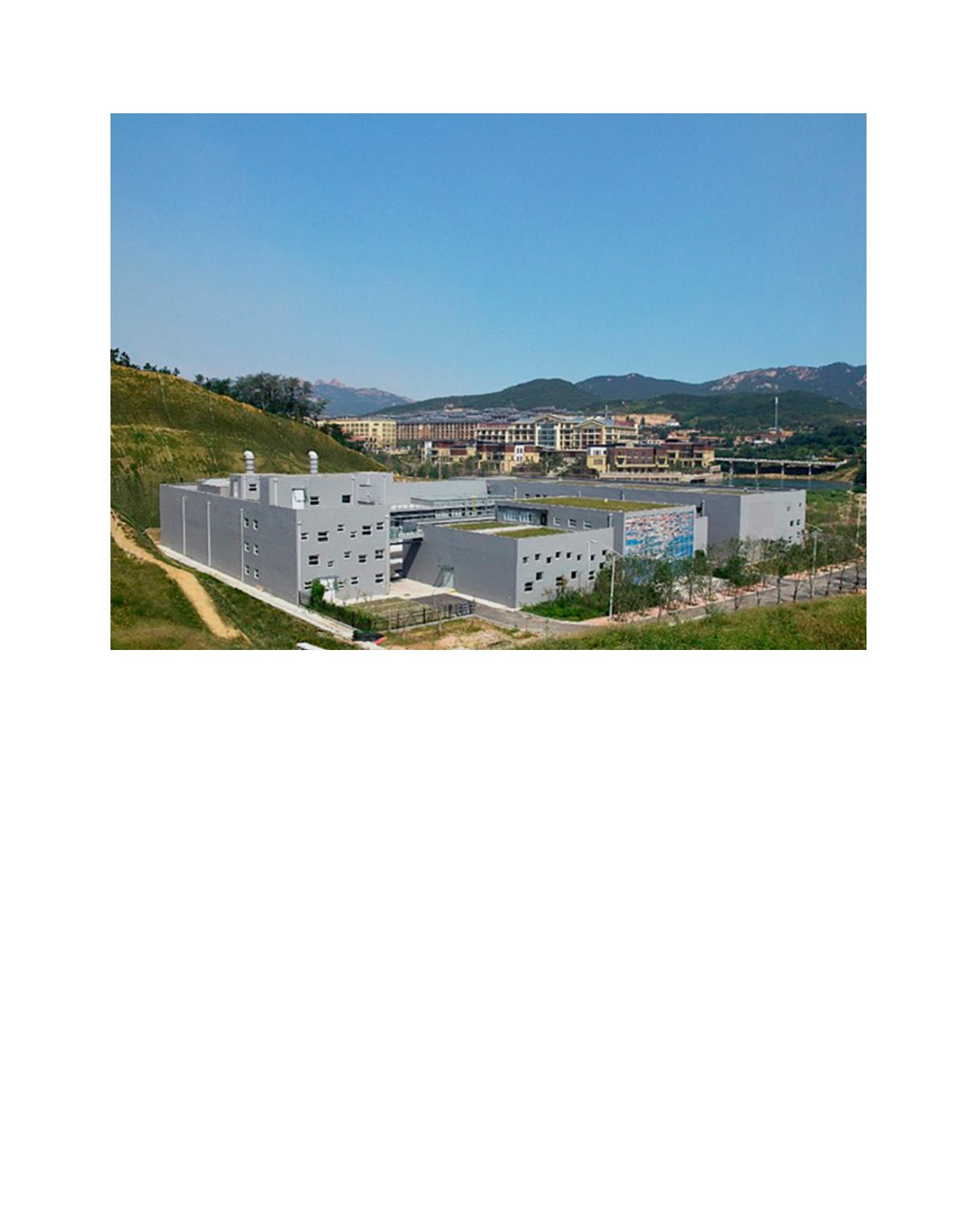

[
] 48
A B
et ter
W
or ld
Case history 3: The Semizentral approach
Semizentral is an alternative infrastructure approach that
addresses the challenges of fast-growing urban areas. Key
elements of Semizentral are system size, ranging between central
and decentral; a district-wise realisation; and high resource
efficiency, with the infrastructure of the water, wastewater,
biowaste, and energy sectors integrated into one system.
24,25
Treated and disinfected wastewater is used for purposes that
do not require drinking water quality, for instance toilet flush-
ing or irrigation. Also, the energy potential of wastewater and
solid waste is exploited – biogas from co-digestion of sewage
sludge and biowaste is used for heat and electricity production.
Semizentral is therefore a far more resource-efficient system
compared to conventional, centralised systems (see Fig. 9). The
innovative infrastructure approach, developed at Institute IWAR
of TUDarmstadt, Germany in cooperationwith various research
and industry partners from Germany and China such as Tongji
University, Shanghai, won the GreenTec Award 2015 given for
outstanding achievements towards sustainability in urban infra-
structure development. The above picture shows the Resource
Recovery Center realised in Qingdao, Shandong, China
Iconography as a valuable tool in achieving the SDGs
As discussed above, many of the SDGs will not be realised
without achieving SDG 6 through sustainable sanitation.
But sustainable sanitation can be achieved only when
addressing SDGs other than SDG 6. Therefore, the German
Water Strategy spearheads both approaches, describing
needs and guidelines for the sanitation and water sector,
and linking the sector to a range of other sectors, and hence
other SDGs.
Especially crucial in making holistic sanitation systems
commercially viable is the consideration of matter fluxes
of organic material, as well as related energy and ferti-
liser content beyond sanitation-related materials. A sound
approach is to first ask which product has the highest market
value in a given context, then to plan all sanitation system
components such that it becomes easy as well as time-,
resource- and cost-efficient to produce that product from
organic waste streams including excreta. This calls for a
type of urban planning that is rarely seen – an integrated
urban masterplan for water, organic waste (including excreta
and faecal sludge), energy management (for instance, using
biogas produced from waste), and food production.
The German Water Strategy has been developed alongside
working papers that clearly address the links between sectors
and describe related needs and opportunities.
27
This article
stresses the idea that communication between a large range
of sectors will be made simpler by using iconography that
allows for cross-sectoral communication.
The first implementation of the Semizentral approach has been in operation since 2014 in Qingdao, China. The central infrastructure element is the Resource
Recovery Center
Image: Susanna Neunast
















